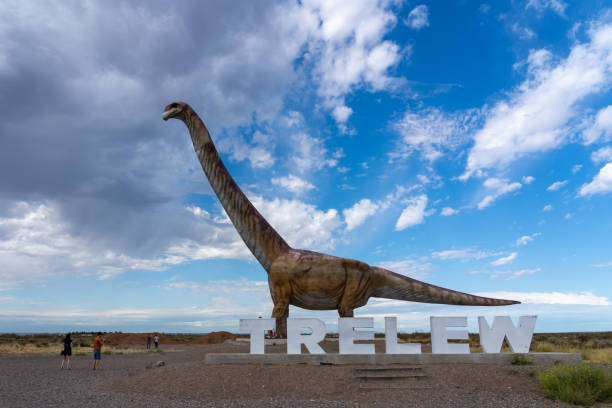Crazy True Facts About Dinosaurs
For over 150 million years, fantastic beasts of staggering proportions strode across the earth, dominated every landmass, and reigned supreme over all other animals. The age of the dinosaurs saw the rise of true leviathans, the likes of which had never been matched before or since. From the most miniature feathered flyers, no larger than a sparrow, to the towering titans that weighed more than a herd of elephants, the incredible diversity spanning these ancient giants never ceases to awe and confound. As discoveries are continually brought to light, the ancient dinosaur realm’s wonders, mysteries, and misunderstandings continue presenting fresh puzzles and marvels yet to be solved regarding the prehistoric world’s most successful and enigmatic occupants.
The Curious Case of T-Rex’s Teacup Talons
One of the most bizarre – yet accurate – facts about dinosaurs is how the ferocious Tyrannosaurus rex boasted a truly puny pair of paddle-like arms. Despite looming as one of history’s most formidable apex predators as a 40-foot long, 7-ton killing machine, T-rex’s itty bitty arms measured just 3 feet in length and ended in puny two-fingered hands clutching mere dagger-like claws. While scientists long postulated these stumps served little practical use, emerging ideas suggest T-rex may have maneuvered those miniature members in elaborate courtship rituals or to assist in repositioning its massive body, proving fantastic beasts come in surprising packages and first impressions sometimes prove wrong.
Great Dinosaur Regurgitation
An intriguing new notion posits that some of the most enormous dinosaurs may have possessed the power of the bellowing burp. Much like modern cattle and pigs break down their bulky plant meals through periodic gastric belching, scientists theorize giant sauropods like Brachiosaurus could have evolved similar mechanisms to better process and extract nutrients from their copious vegetable intake. After all, without occasional gaseous relief from the epic volumes of foliage fermenting away in roomy ribcages the size of tiny houses, even the gut capacity of behemoths miles long from nose to tail may have proven inadequate. Thus, did prehistoric pre-tourinants possibly perfect the proper art of prairie dogging to get the most out of every mouthful? Did the skies of yore echo with the thunderous tympanist of tropical titans relieving the routine rumbles? We may never know, but it makes for an amusing image nonetheless!
Plumes and Proto-Plumage in Ponderous Giants
While smaller lambeosaurus like Velociraptor have been confirmed as truly feathered fiends, recent hypotheses suggest even much larger ornithologist such as Brontosaurus may have boasted some form of primitive plumage too. Though incapable of actual flight, these towering beasts possibly evolved simple branching filaments or bristly quilts more akin to an emu’s down than a sparrow’s nest for insulation and display rather than actual feathers per SE. After all, the staggering amounts of heat vast bodies required must have posed substantial regulatory challenges, making sparse down very plausible. Such proto-plumage has served social functions through splendid designs and vibrant shades flaunting fitness to fellow behemoths from afar. Who’s to say courts of colossal creatures didn’t choose mates by the magnificence of their modified fuzz?
Specialized Sinuses for Nasal Trumpeting
Hadrosaurs like Parasaurolophus boasted bizarre skull extensions, which, according to analysis, functioned like organic megaphones attached to complex nasal sinuses. These structures likely helped the huge herds communicate across vast distances through infrasonic low-frequency rumbling.
Giant Deinonychus Could Change Colors
Some scientists propose the famed “terrible claw” sported rudimentary abilities to alter hues for moods like attracting mates or intimidating rivals through controlled vasodilation, an early form of chromatic communication now seen in chameleons.
Oviraptors Doted on Their Young
Fossilized nests reveal these feathered females lounged protective guard over their eggs in brooding positions, ready to defend their young with sickle-shaped talons. One remarkable specimen was preserved fetal-like atop an unhatched pile, showing caring instincts even in prehistoric parents.
Spinosaurus Was Aquatic
A recent analysis of this colossal carnivore’s skeletally widened tail base, short hind limbs, and hydrodynamically shaped teeth and jaws suggests it spent much time patrolling rivers and coasts, making it history’s most extensive known semiaquatic dinosaur.
Microscopic Dino Teeth Contained Ancient Bacteria
Petrified plaque clinging to the fossilized nubs of diminutive compsognathid jawbones held prismatic microbe colonies similar to those found today inside mammal mouths, highlighting that dental and oral health issues impacted even the tiniest of toothed titans.
Ostriches Grew Dentures
Many ornithopods, includingdinosaurs, programmed their beaks to periodically shed sections and replace them with new layers of bony dentinal spines as they wore down through extensive eating. This gave dinosaurs an innate capacity for self-regenerating “teeth” long before mammals evolved true choppers.
Conclusion
As innovative investigative techniques like electron microscopy and forensic pathology unveil ever more microscopic marvels nestled within nature’s oldest remains, it seems inevitable that fresh facets of dinosaurian daily existence will keep coming to light. Each novel discovery illuminates overlooked aspects of extinct ecosystems and evolutionary mechanisms and reminds us how much more lies are left to learn about our intriguing prehistoric predecessors who played such pivotal roles in crafting the world as we now know it. Hence, Generations of humanity’s heirs may well gaze back with yet greater appreciation for the gigantic giants who established terrestrial tyranny sofas.
Why were T-Rex’s arms so small?
While scientists aren’t entirely sure, current theories suggest that due to their disproportionate size, T-Rex’s tiny arms were likely used for mating displays or gestures rather than hunting or grasping prey.
What evidence proves Velociraptors had feathers?
Fossilized skin impressions and quill knobs discovered on numerous dromaeosaur species indicate they possessed various proto-feathers or feather-like filaments used mainly for insulation and possibly display.
How could dinosaurs have burped?
Paleontologists theorize that enormous plant-eating dinosaurs like Brachiosaurus may have evolved the ability to periodically erupt gases from their multilayered stomachs, much like cows, to help them digest vast volumes of vegetation.
What features made Ankylosaurus such an effective herbivore?
In addition to its clubbed tail acting as a natural slung medical kit, Ankylosaurus was protected by extensive bony armor plating and anchored by a muscular ball-and-socket tail for defense against predators on the prehistoric plains.
Do we know why some dinosaurs had feather-like growths?
While theories differ, many paleontologists propose these primitive filaments or quilts found on larger ornithopods provided benefits like thermal regulation and social signaling rather than flight, helping address the challenges of their gigantic statures.






